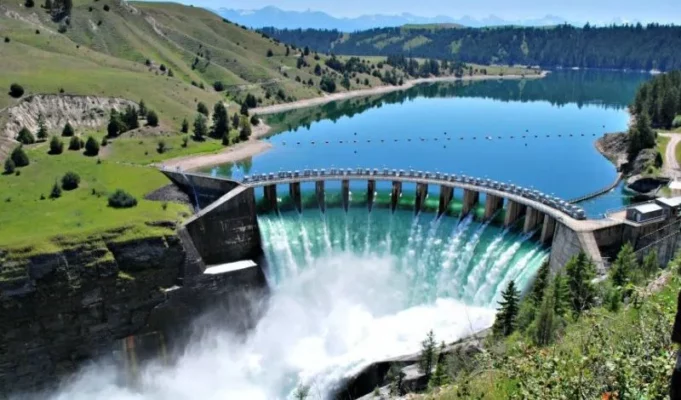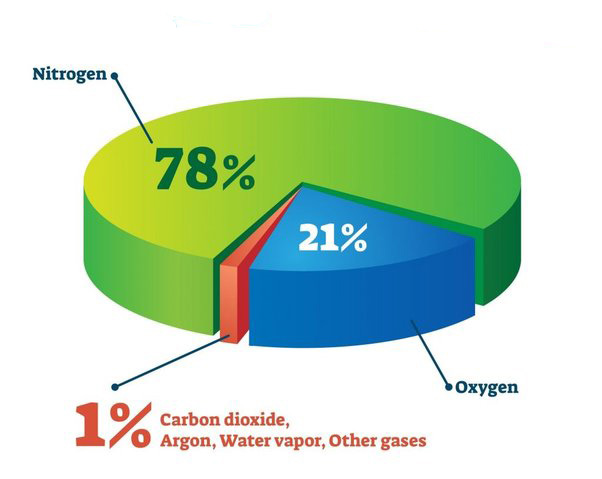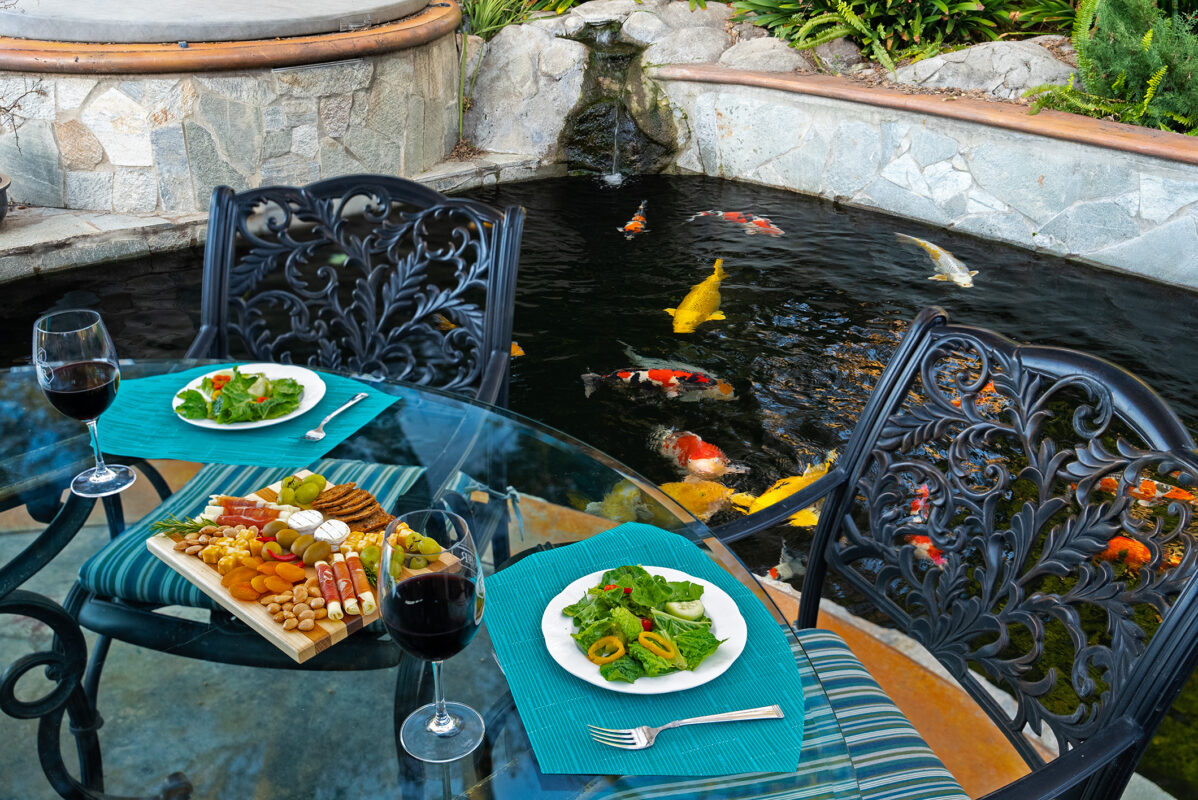Is increasing the oxygen level above the saturation point safe for koi?
It is not uncommon for the oxygen saturation point in a pond to naturally rise above 100% for a period of time. This can happen whenever algae is growing rapidly and producing oxygen faster than it can be consumed by the surrounding environment.
But, is it safe to keep the oxygen level above 100% on a regular basis? For many the biggest concern is the possibility of causing “gas bubble disease”. Gas bubble disease in fish is caused by the supersaturation of gases (mainly nitrogen and oxygen) in the water. When the water contains higher concentrations of dissolved gases than it can normally hold at a given temperature and pressure, these gases can come out of solution and form bubbles that can lodge in the tissues and bloodstream of fish.
 This can be a serious issue near hydro electric dams where large amounts of water are passing over the dam causing the water down stream to become supersaturated with gases. This has been found to create health problems, particularly in salmon, leading to the presence of gas bubbles in the eyes, gills, skin, and other tissues.
This can be a serious issue near hydro electric dams where large amounts of water are passing over the dam causing the water down stream to become supersaturated with gases. This has been found to create health problems, particularly in salmon, leading to the presence of gas bubbles in the eyes, gills, skin, and other tissues.
We have found that by using pure oxygen instead of air to supersaturate water in a koi pond you greatly decreases the chances of causing gas bubble disease.

Here’s why:
1. Nitrogen vs. Oxygen: Air is about 78% nitrogen and 21% oxygen. When water is supersaturated with air, it usually contains a lot of excess nitrogen, which is the main culprit in gas bubble disease. Using pure oxygen avoids this problem because it doesn’t introduce excess nitrogen.
2. Oxygen Solubility: Oxygen has a higher solubility in water than nitrogen, which means it is less likely to come out of solution and form harmful bubbles compared to nitrogen at the same levels of supersaturation.
At Sacramento koi we have tested this system for the last 3 years. Back in 2020 we started maintaining all the new koi we bring in from Japan each year in tanks with dissolved oxygen levels in the water from 120% up to 200% of the saturation point. That meant maintaining from 350 to 500 expensive koi, each year, for at least a 4 month period, (which is our minimum quarantine period) at these saturation levels. During the last 3 years testing period we have yet to see a single incident of a negative effect to any koi. To the contrary, we continue to be impressed by the positive effects the surplus of oxygen has had on all the koi. Steve, the owner, has kept his personal pond at a saturation point between 120% and 170% for almost 4 years now with excellent results.


